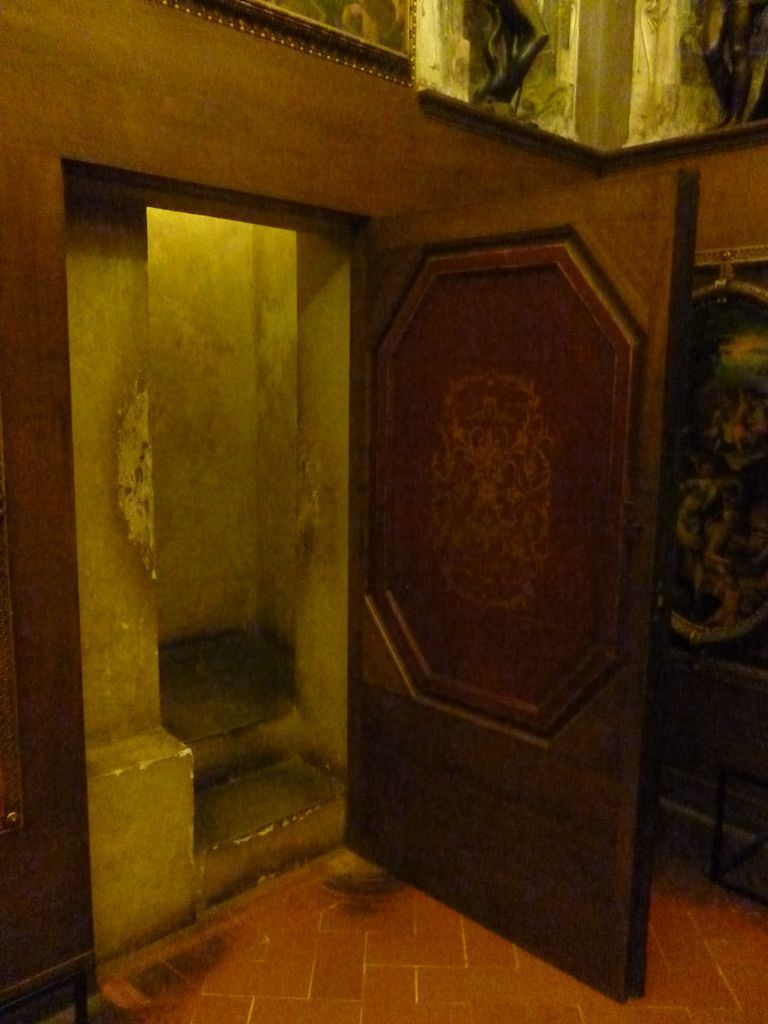Palazzo Vecchio, as is the case with all medieval and Renaissance palaces, has several secret passages.
Sovereigns, court members, or simply the rich and powerful who used to live in these palaces always needed escape routes and private spaces in which they could stay hidden.
These escape routes were needed for security reasons—conspiracies and plots against them were quite common, and these ancient palaces were so big that their inhabitants needed a number of ways to leave the building, stay out of reach of their soldiers, or be able to hide in a safe place.
Nobody would be able to hear their shouts for help in the middle of a Middle Ages night.
Furthermore, during the Renaissance and medieval times, the concept of privacy was virtually unknown.
Rich people as well as poor people spent their entire lives surrounded of dozens of other people while going about their everyday activities: dressing, washing up, waking up, and even sleeping.
Having secret passages was also a way to have access to studioli and tesoretti, the only rooms where the most powerful and lucky people could be alone, dedicating themselves to private matters.
Studioli and tesoretti were very small rooms where the head of the household usually kept some key documents, much loved and precious small objects, as well as collections of rare and odd items.
These rooms were also small so that their owners could enter them alone—without guards―seeing the border of the room also during the night at the candle light, checking that nobody was there.
These rooms usually had at least one main entrance and one secret exit, again to be used to escape in case of danger.
Palazzo Vecchio follows this same arrangement and has several secret passages. It is very difficult to say exactly how many because the palace is so enormous. A number of wings are currently not in use, and some secret passages were walled in through the centuries.
The Studiolo of Francesco I, son of Grand Duke Cosimo and later Grand Duke himself, for example, has one entrance plus two secret passages, one leading to the cellars and one upstairs, leading to the Tesoretto of Cosimo I, his father’s private room.
This room, so hidden that it was only rediscovered at the beginning of the twentieth century, has one entrance and an escape route leading to the cellars.
Private rooms were usually only for men, but Duchess Bianca Cappello, paramour and second wife of Francesco I, was so loved and smart that she also had a private study in Palazzo Vecchio.
This study was accessible through the Armenia Map in the Hall of Geographical Maps.
Another secret passage is the one that leads from the bedroom of Cosimo I right on the ground floor, next to a secondary exit of the Palace.
Would you like to visit Palazzo Vecchio’s secret passages? Book our Florence Inferno Tour and enjoy an adventure!











Very nice blog, I have also my one in spanish and I want to invite you to join it, we are complements: you in english and me in spanish: http://infernofirenze.blogspot.com.es/.